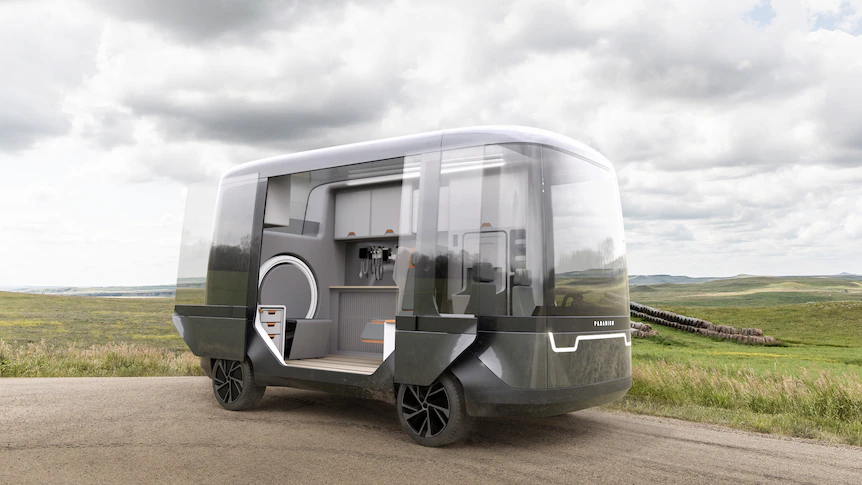By Danielle Kutchel
Sue Carroll has seen some grim things in her time as a bush nurse.
Head injuries and skull fractures are among the worst and need treatment fast.
Ms Carroll is the nurse manager at Swifts Creek Bush Nursing Centre, almost 400 kilometres from Melbourne’s hospitals — where many of the most serious patients must go either by road or by helicopter.
Serious injuries often require CT scans to determine the extent of the damage and the treatments needed.
But not all hospitals can do this, which is why patients from remote areas are transferred to major cities.
“Time is critical, so you need them moved immediately,” Ms Carroll said.
However, Australian researchers are working on a first-of-its-kind mobile CT scanner that aims to provide more timely access to scans for people living in rural and remote areas.
Lighter, mobile medical technology
Monash University’s Design Health Collab is leading the design of the new CT scanners, alongside medical technology developer Micro-X and Johns Hopkins University in the United States.
The work is still in the early stages of development.
The team is designing the new scanners to be compact.
Their aim is a final weight of 225 kilograms — far less than conventional CT scanners that weigh 2 tonnes.
This means the technology could easily be fitted to smaller vehicles, unlike current mobile CT scanners that are installed onboard trucks.
The team hopes the system can also provide full-body scans and be used for general diagnostic imaging for things like abdominal pain, chest pain, head injuries, or neurological symptoms, cancer follow-ups, and trauma assessments.
If everything goes according to plan, the mobile scanners could be used in several ways, including on-call in a similar way to ambulances, or by moving through regional towns on a schedule to provide regular, routine opportunities for healthcare.
Ms Carroll said she would still opt to send patients to a hospital in emergencies, so they could receive surgery as soon as possible.
But she could see a use for the mobile CT scanners if they visited communities on a regular basis in a similar way to the breast screening bus, to help reduce wait times for patients needing preventative or diagnostic scans.
“That sort of thing would work, if you knew they were coming into the area … to be able to book ahead,” Ms Carroll said.
‘Postcode lottery’ of rural health
For now, the team behind the lightweight scanners has received a grant from the US Advanced Research Projects Agency for Health (ARPA-H), allowing the compact CT scanners to be built and rolled out across rural communities in the US from 2029.
Design Health Collab project lead Nyein Chan Aung hoped the technology could one day be roaming Australia’s roads too.
“We’re actively seeking partners and funding sources for Australia,” he said.
“While this project is US-focused, the tech and learnings are applicable to Australia as we also face geographic and access challenges.
“We will likely also need adaptations to the Australian context, to respond to nuances in Australian aged care, rural health, or possibly a combined response of diagnostic and emergency needs.”
Dr Aung said the new technology could bring hospital-level medical imaging to underserviced areas, beating the “postcode lottery”.
“Seven million Australians live in rural or remote areas, and … stroke patients outside the big city areas often have to wait three to six hours longer to receive any sort of imaging, which essentially reduces all chances of having a good recovery.
“I think this is a very effective solution to very quickly meet the needs of people who just aren’t getting any help.”
Designed to be used by generalists
Dr Aung added that just 15 per cent of radiologists and 17 per cent of medical imaging technologists operated outside metropolitan areas, making it even more difficult for rural Australians to access imaging.
Crucially, clinicians without specialist imaging skills will be able to use the scanners.
While they would receive some additional training, Dr Aung said the operators would be generalists.
Saving time
Ray Gallagher is president of the Omeo District Football Netball League, not far from Swifts Creek.
He said he had “seen some bad knocks” in his time at the league, with players taken away by ambulance after a rough game.
Rural life also comes with its risks.
“We’ve got a new bike track at Omeo, they have the rodeo up there, we have picnic races, skiers, dirt bike riders,” he said.
“There are lots of people trying hard to hurt themselves.”
Mr Gallagher also supported a mobile CT scanner for rural communities on a routine basis to save people from making long road trips for preventative care.
He would like to see them incorporated into heli-med services for emergency situations to get patients scanned and evaluated quickly.
The Australian Society of Medical Imaging and Radiation Therapy has been contacted for comment.
